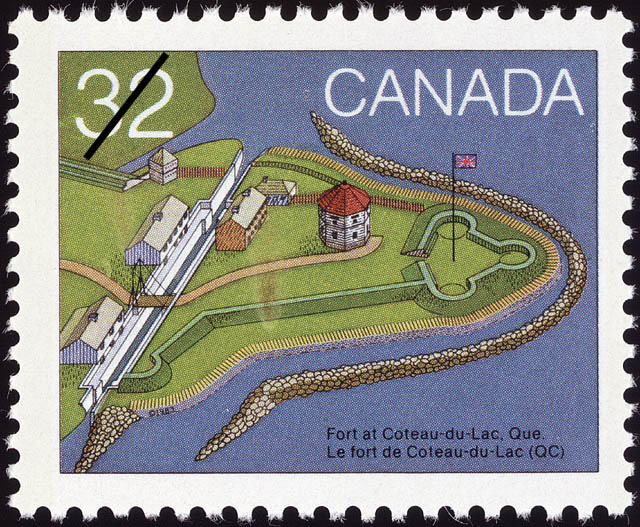
Historical designations
Coteau-du-Lac National Historic Site
Step back in time with this glimpse into stories and milestones surrounding the history of Coteau-du-Lac's fortified canal.
Historical designation
- May 25, 1923: The Coteau-du-Lac fortified canal is designated a National Historic Site of Canada.Reasons for designation issued in 2002 include the fact that it is one of the oldest lock canals in North America, that from 1778 to the mid-19th century, it was the site of a British military post that defended the corridor and facilitated the transport of goods on the St. Lawrence River, and was a strategic point during the American Revolution and the War of 1812. More information can be found in the Directory of Federal Heritage Designations.
Timeline and other milestones
Long after the aboriginal and military occupation, several steps were taken to preserve and commemorate Coteau-du-Lac National Historic Site.

- 1856: The Coteau-du-Lac fort and canal are transferred to the United Province of Canada.
- 1858 to 1865: The site is leased to L. Adams, who uses it as pastureland.
- 1865 to 1889: the site is leased to Georges Beaudet, an entrepreneur who builds a sawmill. As for the military facilities, they quickly deteriorated and crumbled into ruins.
- 1891: The site was transferred from the Department of the Interior (formerly part of the federal government of Canada) to the Department of Railways and Canals, which operates a quarry there. Interestingly, it's also possible that stones from the canal and military buildings were taken here.
- 1911: Parks Canada, as we know it today, is created as the Dominion Parks Division.
- 1923: The site was transferred from the Railways and Canals Department to the Department of the Interior.
- 1929: The first commemorative plaque is unveiled by the Historic Sites and Monuments Board of Canada. The text focuses first on the construction of the canal, then on the military facilities set up to protect it.
- 1965 to 1966: An archaeological excavation program is undertaken by Parks Canada. This revealed the remains of the main structures (lock canal, defense, accommodation and service buildings, etc.) and collected numerous artifacts. Further archaeological work was carried out in 1968 and 1982.
- 1967: the remains of the military buildings are restored.
- 1968: The site opened to the public in May. However, visitors were able to tour the site on the occasion of the World Expo of 1967 held in Montreal.
- 1968: following the discovery of paleohistoric traces revealed during the 1965 excavations, further research is carried out.
- 1969 to 1970: A replica of the 1813 octagonal blockhouse is built to reflect its external features as accurately as possible.
- 1989 to 1990: Construction of the Visitor Centre begins, in order to welcome and accommodate visitors.
- 1980: A second commemorative plaque, with an adjusted narrative, is unveiled and affixed to the entrance of the interpretation center by the Historic Sites and Monuments Board of Canada. This time, the text focuses on the military post that defended the St. Lawrence freight corridor.
- 1982: A final excavation is carried out to assess the archaeological potential of areas outside the previously excavated zones of the historic site.
- 1983: Coteau-du-Lac National Historic Site is commemorated by a 32-cent stamp issued by Canada Post.
- 2003: A new exhibition is featured in the replica blockhouse to present the role and function of such a building.
- 2023: Coteau-du-Lac National Historic Site celebrates 100 years of historic designation.
Heritage development

In 1968, the Coteau-du-Lac site was opened to the public. Restoration work began in 1982, with two aims in mind: to highlight the military, commercial, residential and industrial activities that have taken place at Coteau-du-Lac, and to recognize the site's key role in the development of transportation and communications in Canada.
As the forerunner of today's St. Lawrence Seaway, the Coteau-du-Lac canal recalls the birth of river transport technology in the country, and highlights the strategic and economic importance of the St. Lawrence River, the main route for penetrating into the heart of the North American continent.
- Date modified :